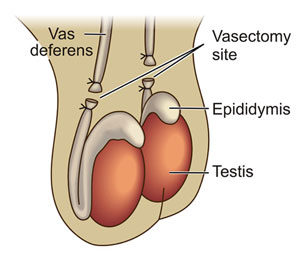
Vasectomy Cost is a safe and effective method of male contraception that involves the surgical sealing or cutting of the vas deferens, the tubes that carry sperm from the testicles to the urethra. This procedure is a popular option for men who have completed their family or who do not wish to have children. However, one of the main concerns for many men considering vasectomy is the cost of the procedure. In this article, we will explore the factors that contribute to the cost of vasectomy and help you make an informed decision.
What factors affect the cost of a vasectomy?
Type of vasectomy procedure:
Vasectomy Cost There are two main types of vasectomy procedures: traditional vasectomy and no-scalpel vasectomy. Traditional vasectomy involves making two small incisions in the scrotum to access the vas deferens and seal or cut them. No-scalpel vasectomy, on the other hand, uses a special tool to create a small hole in the scrotum, through which the vas deferens are accessed and sealed or cut. No-scalpel vasectomy is less invasive and typically results in less discomfort and faster recovery. However, it may be more expensive than traditional vasectomy due to the use of specialized equipment.
Geographic location:
The cost of vasectomy can vary widely depending on the geographic location. In general, vasectomy is more expensive in urban areas than in rural areas. This is because the cost of living and medical expenses are generally higher in cities. For example, the cost of vasectomy in New York City may be significantly higher than in a small town in Kansas.
Healthcare provider:
The cost of vasectomy can also vary depending on the healthcare provider. Different doctors or clinics may charge different prices for the procedure. It is important to choose a reputable and experienced healthcare provider who can perform the procedure safely and effectively.
Insurance coverage:
In most cases, vasectomy is covered by insurance. However, the extent of coverage may vary depending on the insurance plan. Some insurance plans may cover the entire cost of the procedure, while others may require a co-payment or deductible. It is important to check with your insurance provider to understand your coverage and out-of-pocket costs.
Additional costs:
In addition to the cost of the procedure itself, there may be additional costs associated with vasectomy. For example, some healthcare providers may require a consultation or physical exam before the procedure, which may result in additional fees. There may also be costs associated with anesthesia, medication, or follow-up appointments.
What is the average cost of a vasectomy?
The cost of vasectomy can range from a few hundred dollars to several thousand dollars, depending on the factors discussed above. According to Planned Parenthood, the average cost of vasectomy in the United States ranges from $350 to $3,500. However, this does not include additional costs such as anesthesia or follow-up appointments.
How can you reduce the cost of a vasectomy?
Choose a healthcare provider wisely:
Choosing a reputable and experienced healthcare provider can help ensure that the procedure is performed safely and effectively, which can help reduce the risk of complications and additional costs.
Consider insurance coverage:
Check with your insurance provider to understand your coverage and out-of-pocket costs. If your insurance plan does not cover vasectomy or requires a high co-payment or deductible, consider shopping around for a different plan that may offer more coverage.
Ask about financing options:
Some healthcare providers may offer financing options to help cover the cost of vasectomy. This may include payment plans or loans that allow you to spread the cost of the procedure over time.
Vasectomy Cost How Its Work?
Vasectomy is a surgical procedure that involves cutting or sealing the vas deferens, the tubes that carry sperm from the testicles to the urethra. This procedure is a permanent method of male contraception that prevents the release of sperm during ejaculation.
During a traditional vasectomy, the healthcare provider makes two small incisions in the scrotum to access the vas deferens. The vas deferens are then cut and sealed using a variety of techniques, such as tying, cauterization, or clips. This prevents sperm from being released during ejaculation and therefore prevents pregnancy.
No-scalpel vasectomy is a newer and less invasive technique that involves making a small puncture in the scrotum with a special tool. The healthcare provider then uses this opening to access the vas deferens and cut and seal them. No-scalpel vasectomy is generally associated with less pain and a faster recovery time than traditional vasectomy.

If you want to get amazing benefits by using this link
The procedure is typically performed under local anesthesia and takes about 30 minutes to complete. Most men are able to return to work within a few days and resume normal physical activity within a few weeks.
The cost of vasectomy can vary depending on a number of factors, including the type of procedure, the geographic location, the healthcare provider, insurance coverage, and any additional costs associated with the procedure. In general, the cost of vasectomy in the United States ranges from $350 to $3,500, but this does not include any additional costs.
Conclusion:
It is important to choose a reputable and experienced healthcare provider to perform the procedure to reduce the risk of complications and additional costs. Checking with your insurance provider to understand your coverage and out-of-pocket costs can also help reduce the cost of vasectomy. Additionally, some healthcare providers may offer financing options to help cover the cost of the procedure.
Overall, vasectomy is a safe and effective method of male contraception that can provide long-term benefits. While the cost of the procedure may seem daunting, it is important to consider the long-term cost savings of not having to pay for other forms of contraception, such as condoms or birth control pills.

